CHEM 350: Computer Techniques for Chemistry
The "Computer Techniques for Chemistry" course is required of B.S. Chemistry majors by the beginning of their third year. (Prerequisite: Organic Chemistry 313; pre- or co-requisite Organic Chemistry 314.) Not only does the course fulfill a requirement in the major, it also fulfills the university general education requirement for an Information Technology course.
For a course to fulfill the IT requirement, an Ethics component must be included. In CHEM 350, ethics topics are interspersed throughout the semester. Copyright and Fair Use and plagiarism are discussed early when students begin to develop a web page. Research misconduct and the ethical responsibilities of authorship are discussed in the context of data analysis with spreadsheets and searching for chemical information.
Description of Coursework and Technologies
Introduction to
Computers
For the same reason that a chemistry
major learns the operating theory of various
instruments while simultaneously performing
experiments with them, it is desirable that
students understand the basics of computer
architecture and networking. Topics include:
CPU, memory, I/O devices, storage
devices.
Operating
Systems
Familiarity with both Unix and Windows is
necessary to learn the various computer
applications in the course. Topics include:
basic Unix commands, files and file
management, directories, editors, printing,
etc.
Communications, the Internet, and
the Web
Electronic communication among students
and between students and the professor is an
integral part of the course. Completed
assignments will be either e-mailed to the
professor or accessed by the professor from
the students' websites. Topics include:
Internet basics, telnet, ftp, basic HTML and
web site design and development. Assignments
include mounting a web site that incorporates
simple text, graphics, links, bookmarks, etc.
The completed assignments from the other
parts of this course will be converted to
viewable pages on the student websites. At
the conclusion of the course, the website
will be a portfolio of completed computer
projects.
Chemical
Information
Nowhere in the GMU chemistry curriculum
do we teach information literacy and our
students are not as well-prepared as they
should be to access the chemical literature
or to use chemical reference tools. The
dramatic, technology-driven transformation of
chemical information search and retrieval
provides us with an opportunity to
incorporate this important activity into our
curriculum. Some of the premier print-based
sources of chemical information are now
available by electronic subscription on the
WWW. Topics include becoming familiar with
GMU on-line catalog and other on-line
information sources; searching, saving, and
printing. The sites for these resources will
become bookmarks in the students websites.
Assignments include searching for information
on subjects specified by the instructor;
evaluation of different search tools and
content of information retrieved on-line. The
results from the search projects will be
elaborated on after incorporating them in
other applications.
For example, a search for the amino acid "alanine" might return this journal article:
Samuelson, S.; Martyna, G. J. "Computer Simulation Studies of Finite Temperature Conformational Equilibrium in Alanine-Based Peptides," The Journal of Physical Chemistry B; 1999; 103(10); 1752-1766.
Windows Applications -- MSWord
and Excel
Although most students are probably
somewhat proficient in word-processing, it
will be necessary to review some of the
basics of Windows applications. Topics
include object linking and embedding with the
goal of eventually producing a print document
that incorporates the results of information
retrieval (above), graphs and data, chemical
drawing and molecular modeling
(below).
Spreadsheets are one of the most important applications chemistry students will use, both because it introduces some basic programming skills and because of the wealth of mathematical chemistry problems which can be explored. Programming algorithms, repetitive calculations, and graphic visualization of results is an excellent method for learning, understanding and retaining fundamental chemical principles. Topics include formulas and functions, graphing, statistical analysis of data.
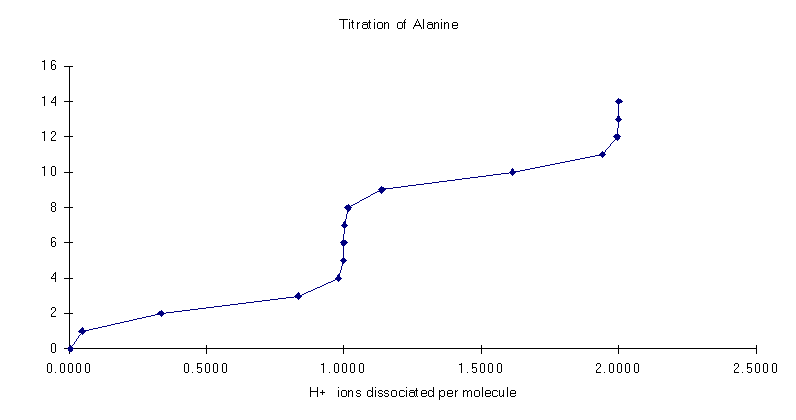
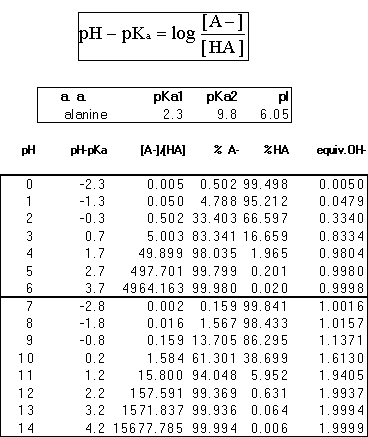
Alanine titration plot and data
Chemical Structure
Drawing
Drawing programs are plentiful, and
sometimes free. There is probably not a
chemist anywhere who does not use such a
program to prepare exams, presentations and
publications. Topics include the basics of
drawing chemical structures. Assignments
include developing personal libraries of
structures and templates, and inserting
structures into other applications such as
Word, Excel, and web pages.
 alanine
alanine
Molecular
Modeling
Molecular modeling, the interactive
combination of 3-D visualization and
computational techniques, is truly a modern
product of advanced computer technology. The
ability to generate three-dimensional
structures, conformations, and reaction
mechanisms of molecules is uniquely
electronic and provides a perspective not
available from the conventional print medium.
Topics include basics of visualization
software, techniques in computational
chemistry such as molecular mechanics and
semi-empirical methods, and energy
minimization. Assignments include analyzing
the conformations of a series of compounds
with different geometries, importing data
into Excel and graphing the potential energy
changes during rotation; protein structure
and active site interactions with substrate
molecules; modeling of molecules retrieved
from on-line information
searches.
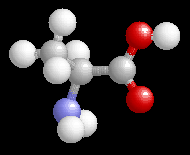
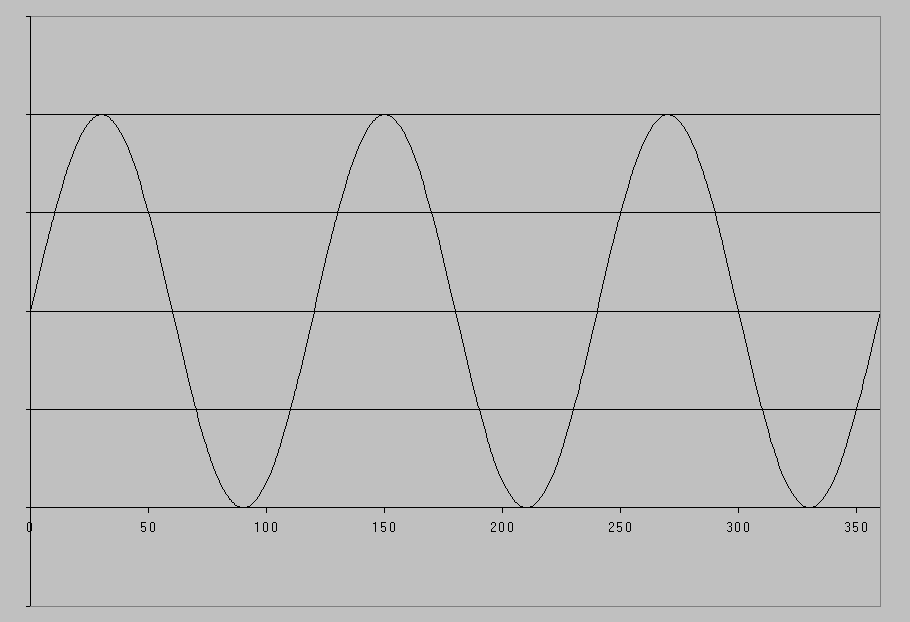
Ball & stick molecular
model of alanine
Rotation around CH3-C bond of
alanine
On-line Chemistry Archives and
Web Searches
Paralleling the growth of the Web are
sites devoted to chemistry databases and
libraries. A few notable examples are the
National Institute of Standards and
Technology (NIST) WebBook of thermochemical
data; the Spectral Data Base System (Agency
of Industrial Science and Technology, Japan)
for IR, MS, C13- and
H1-NMR spectra; the Protein Data
Bank, the international repository for the
distribution of 3-D macromolecular structure
data. Topics and assignments include
searching the databases, downloading files,
using and comparing web search engines and
directories for finding chemistry sites with
specific content.
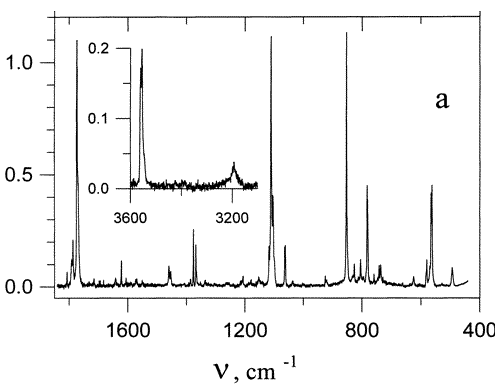 IR spectrum of
alanine
IR spectrum of
alanine
For more information, contact Prof. Slayden 703-993-1071